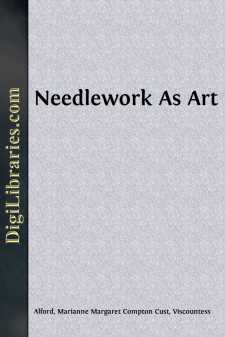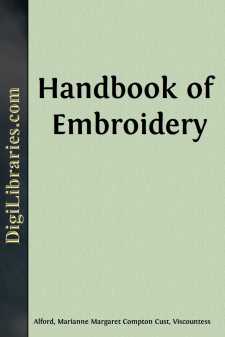Categories
- Antiques & Collectibles 13
- Architecture 36
- Art 48
- Bibles 22
- Biography & Autobiography 813
- Body, Mind & Spirit 142
- Business & Economics 28
- Children's Books 17
- Children's Fiction 14
- Computers 4
- Cooking 94
- Crafts & Hobbies 4
- Drama 346
- Education 46
- Family & Relationships 57
- Fiction 11829
- Games 19
- Gardening 17
- Health & Fitness 34
- History 1377
- House & Home 1
- Humor 147
- Juvenile Fiction 1873
- Juvenile Nonfiction 202
- Language Arts & Disciplines 88
- Law 16
- Literary Collections 686
- Literary Criticism 179
- Mathematics 13
- Medical 41
- Music 40
- Nature 179
- Non-Classifiable 1768
- Performing Arts 7
- Periodicals 1453
- Philosophy 64
- Photography 2
- Poetry 896
- Political Science 203
- Psychology 42
- Reference 154
- Religion 513
- Science 126
- Self-Help 84
- Social Science 81
- Sports & Recreation 34
- Study Aids 3
- Technology & Engineering 59
- Transportation 23
- Travel 463
- True Crime 29
Needlework As Art
Categories:
Description:
Excerpt
PREFACE.
In the Preface to the “Handbook of Art Needlework,” which I edited for the Royal School at South Kensington in 1880, I undertook to write a second part, to be devoted to design, colour, and the common-sense modes of treating decorative art, as applied especially to embroidered hangings, furniture, dress, and the smaller objects of luxury.
Circumstances have, since then, obliged me to reconsider this intention; and I have found it more practicable to cast the information which I have collected from Eastern and Western sources into the form of a separate work, which in no way supersedes or interferes with the technical instruction supposed to be conveyed in a handbook. I have found so much amusement in learning for myself the history of the art of embroidery, and in tracing the beginnings and the interchanges of national schools, that I cannot but hope that I may excite a similar interest in some of my readers, and so induce those who are capable, to help and lift it to a higher place than it has been allowed in these latter days to occupy. If I have given too important a position to the art of needlework, I would observe that while I have been writing, decorative embroidery has come to the front, and is at this moment one of the hobbies of the day; and I would point out that it contains in itself all the necessary elements of art; it may exercise the imagination and the fancy; it needs education in form, colour, and composition, as well as the craft of a practised hand, to express its language and perfect its beauty.
I confess that when I undertook this task, I did not anticipate the time I have had to spend in collecting and epitomizing the many notices to be found in German, French, and English authors, on what has been considered among us, at least in this century, as merely a secondary art, and therefore, as such, of little importance. Cursory notices of needlework are scattered through almost every book on art; and under the head of textiles it is usual to find embroidery acknowledged as being worthy of notice, though not to be named in company with sculpture, architecture, or painting, however beautifully or thoughtfully its works may be carried out. I have tried to show that it deserves higher estimation.
My first intention was simply to consider Style, good or bad, as it influences our embroidery of to-day, and to find some rules by which to guide that of the future in its next phase. But when we search into the fluctuations of style, and their causes, we find they have an historical succession, and that we must begin at the beginning and trace them through the life of mankind.
This led me to attempt a sketch of consecutive styles, their overlap and variations.
I then found that Design, Patterns, Stitches, Materials, each require a separate study.
Colour, as applied to dyes, claims to be regarded as differing from pigments on the painter’s palette.
Hangings, Dress, and Ecclesiastical Embroideries each require different rules, and the study of the best examples of past centuries....



